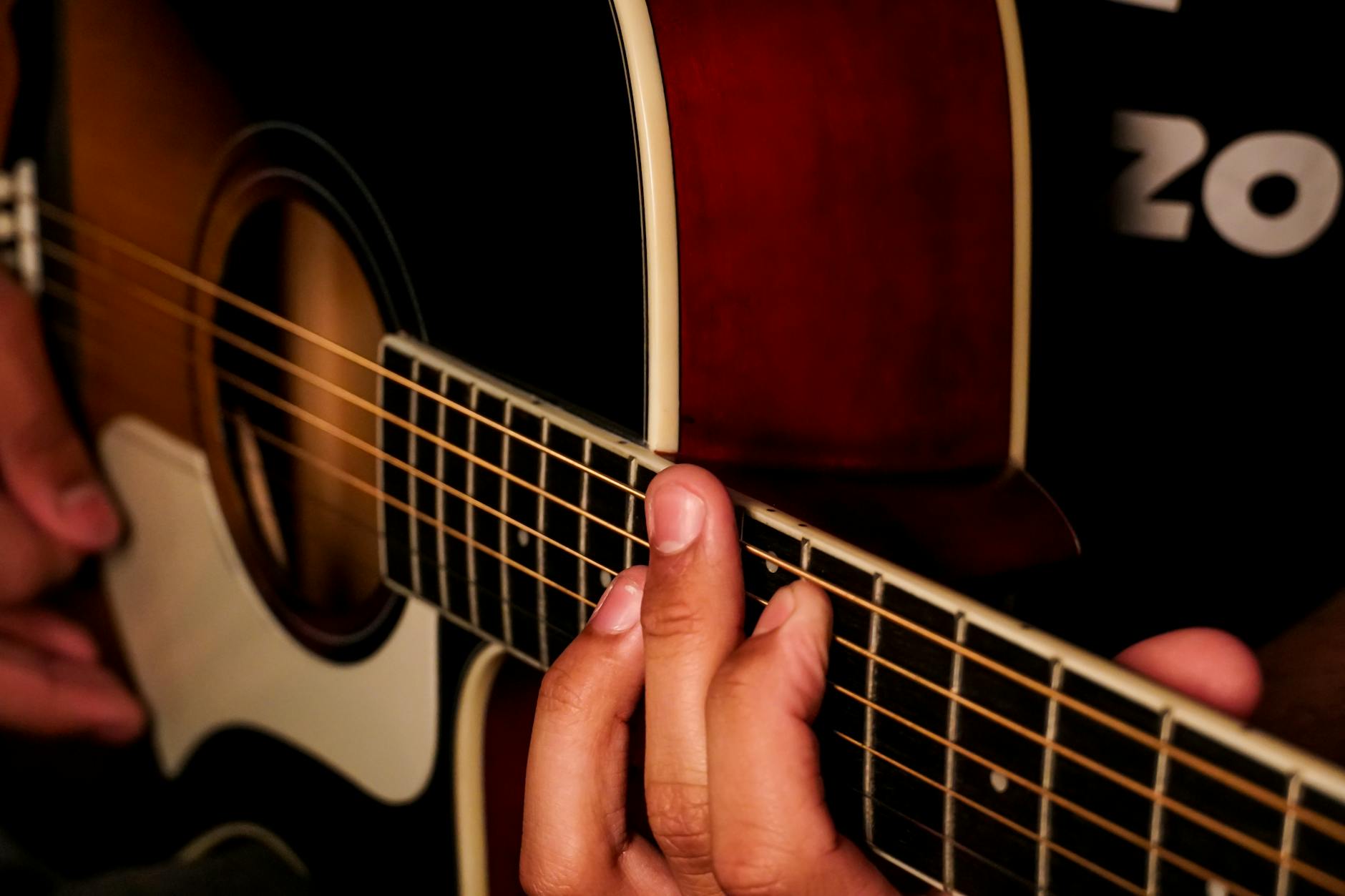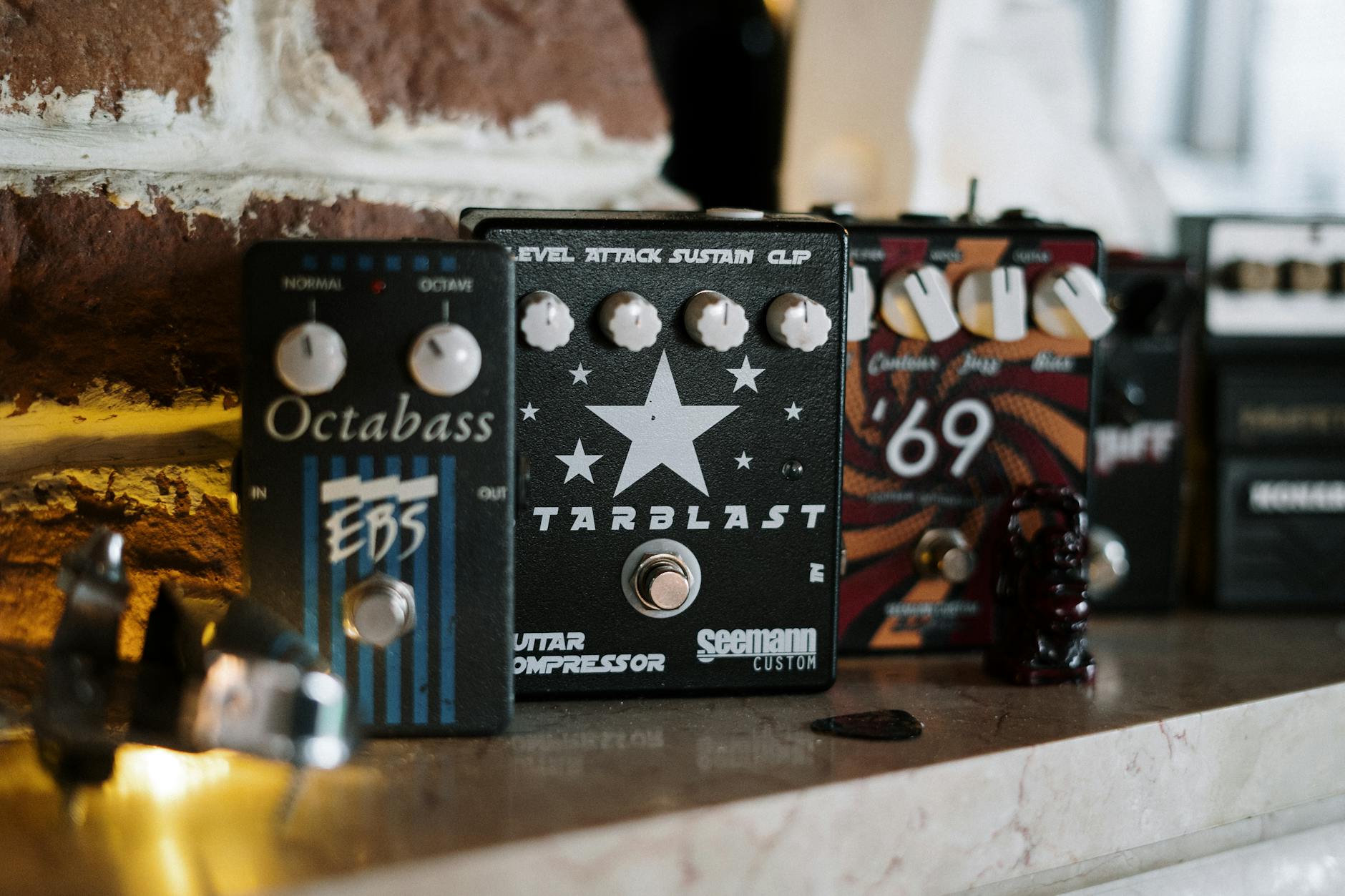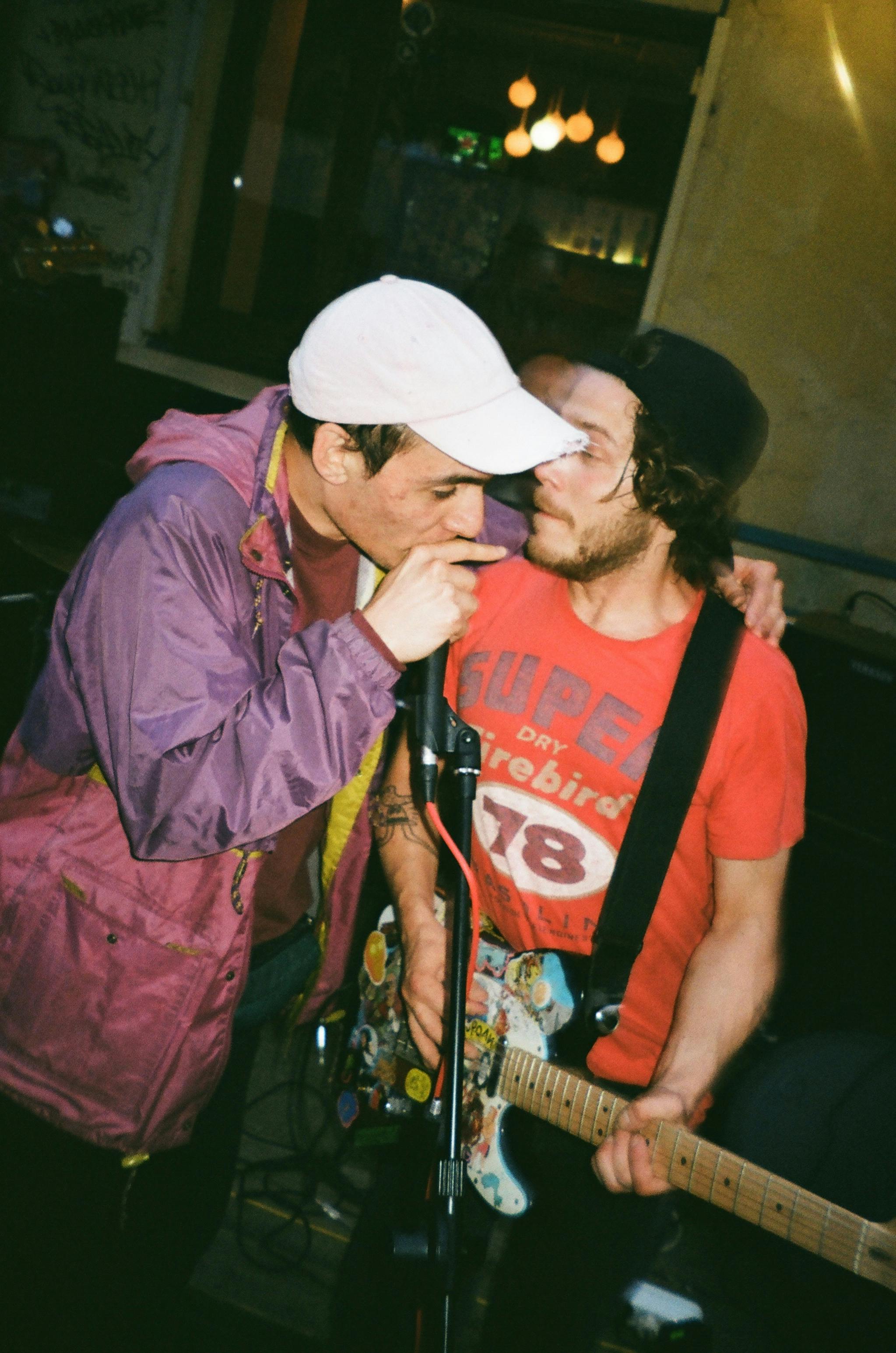The Quantum Guitar Effect That Transforms Ambient Playing
Learn quantum guitar ambient technique to create immersive, physics-bending textures in ambient playing. Elevate your sound—discover new creative methods now!

Imagine sculpting soundscapes so immersive, they seem to bend the very rules of physics—thanks to the quantum guitar effect. As ambient guitar playing explodes in popularity, guitarists are searching for fresh ways to build expansive textures. Enter the quantum guitar: a blend of experimental electronics, quantum-inspired effects, and unconventional techniques forging new frontiers for ambient music. While most blogs stick to classic pedals and layering, this is where things get wild. The quantum guitar ambient technique pushes beyond convention, letting tones shimmer, multiply, and morph in ways that feel both futuristic and deeply musical. Here’s what sets it apart—and how guitarists can tap into these new worlds of sound.
What You'll Learn:
- Demystifies the 'quantum guitar ambient technique' and its origins
- Explains how quantum-inspired effects enable unique ambient textures
- Shows exactly how to build an experimental ambient signal chain
- Reveals looping and layering methods for deepening soundscapes
- Shares pro tips, common mistakes, and creative rig hacks
- Details where quantum guitar tech is headed for future ambient music
What Is the Quantum Guitar Effect? (And Why It Matters for Ambient Sound)
Ambient guitar thrives on new sounds that push the familiar boundaries. The quantum guitar effect sits right at the cutting edge, blurring lines between advanced physics and musical creativity. It's not just about another pedal—it's a wave of experimental tech quietly reshaping ambient textures.
Defining Quantum Guitar: Science Meets Sound
So, what makes a guitar or pedal "quantum"? The answer starts with electronics. Some pioneering pedals, like the QuantumDrive and WaveFunction Overdrive, rely on concepts from quantum physics—molecular electronics and quantum tunneling. These tools play with electron flow in new ways, letting signals pass through barriers that would block them in traditional designs. The result: distortion and harmonic content that's more dynamic, unpredictable, and alive. Not science fiction—genuine hardware rooted in quantum principles. The 'A Quantum Guitar' paper even explores qubit-based sound manipulation, hinting at where things could go next.
Quantum Pedals in Practice: Examples and Innovations
Real-world quantum-inspired gear is rare, but it's out there. The QuantumDrive pedal uses quantum tunneling circuits to deliver vowel-like, expressive distortion with a response different from any diode-based box. Nanolog Audio's WaveFunction Overdrive takes molecular-layer tech for a harmonically rich, non-linear sound. Ambient guitarists who want something truly different are finding these types of pedals for sale on the fringe of the boutique effect world.
- QuantumDrive: dynamic, vowel-like overdrive using quantum tunneling
- WaveFunction Overdrive: molecular electronics, non-linear, harmonic distortion
- Other concept pedals—experimental, ultra-rare, but growing
Why Quantum Effects Matter for Ambient Guitarists
Why should ambient players care? Because these effects don't just "color" the tone; they transform it. Quantum-style pedals inject unpredictability—soft plucks bloom into swirling textures, sustaining notes mutate into rippling overtones. For soundscape builders, that's pure gold. These effects grant access to textures and movement that are nearly impossible with traditional gear. When building evolving sound environments, unpredictability and non-linear response add a lifelike, shifting quality.
The quantum guitar effect gives ambient musicians a new toolkit—sophisticated, sometimes wild, but always inspiring for those chasing sounds nobody's heard before. As the field grows, expect even more surprises in the ambient underground.
Core Principles of Ambient Guitar: From Texture to Technique
Even the most advanced gear won't create compelling ambiance without a core understanding of what makes ambient guitar truly work. The heart of ambient sound: atmosphere first, melody last. So building textures means prioritizing effect types, order, and hands-on playing methods.
Atmosphere First: The Role of Effects in Ambient Playing
Ambient playing swaps riffing for texture-building. Tools like reverb, delay, modulation, and looping shape the musical landscape. Effects aren’t just decorations—they’re composition. Better yet, they let players generate endless variations:
- Reverb: sets the scene—hall, plate, shimmer, or pedal-based ambient types
- Delay: echoes and foot-controlled repeats become rhythmic or atmospheric
- Modulation: chorus, phaser, or pitch vibrato to add subtle movement
- Looping: captures phrases for layering, evolving, transforming
Stacking these builds the signature "wall of sound" that defines modern ambient music.
Signal Chain Secrets: Crafting Unusual Textures
How effects are chained matters just as much as which ones are used. Change the order—change the sound. Some powerful chains include:
- Reverb before delay for bleeding, smeared echoes
- Parallel chains to split dry/processed signals
- Using effects loops or even feedback loops for extremes
Try this: place shimmer reverb before delay, then blend a little dry signal. Most guitarists find this gives their phrases an evolving, three-dimensional quality not heard in standard setups.
Hands-On Techniques: Swells, Slides, and Open Tunings
Ambient guitar playing isn’t hands-off. Volume swells, slide work, and open tunings all create texture from the ground up. Here are the not-so-secret tricks:
- Volume pedal swells remove attack for pad-like notes
- Slides (glass, metal) smear pitch, making transitions fluid
- Open tunings (e.g., DADGAD, open C) let notes drone and shimmer
- Palm muting and fingerpicking for rhythmic or percussive texture
With these hands-on tools and a creative signal chain, any ordinary chord can become an evolving, ambient layer. There’s a reason top ambient artists spend more time on signal routing than on scales. The next step: introducing quantum elements for even wilder sound design.
Quantum Guitar Ambient Technique: Step-by-Step Methods
Building a quantum-inspired ambient rig means combining innovative pedals with tried-and-true signal path wisdom. Guitarists can harness quantum guitar ambient technique to invent their own evolving soundscapes—no PhD required, just curiosity and the right gear.
Building Your Quantum Ambient Rig: Gear and Setup
Start with the essentials—a solid guitar, a pedalboard, and some basics. Here's a straightforward lineup that works for most ambient-minded players:
- Compressor: smooths out peaks and boosts sustain
- Quantum-inspired Overdrive (QuantumDrive/WaveFunction): adds unpredictable harmonics
- Volume pedal: for swells and "no-attack" notes
- Delay: set to 600-700ms, high repeats
- Shimmer reverb or long-decay reverb: creates a lush wash
- Looper(s): for layering textures
Try: Guitar → Compressor → Overdrive → Volume Pedal → Delay → Reverb → Amp or Interface. This core chain unlocks most modern ambient options.
Signal Chain Recipes: From Compressor to Shimmer
Changing chain order shifts the sonic result. For the "quantum guitar ambient technique," experiment with these two setups:
- Compressor → QuantumDrive Overdrive → Volume Pedal → Delay (repeat ~700ms, feedback 60%) → Reverb (shimmer, wet/dry ~80/20)
- Guitar → Compressor → Volume Pedal → Reverb (shimmer mode, full wet) → Delay (time ~750ms) → Looper
Small tweaks—like flipping reverb ahead of delay—yield subtle yet dramatic textural changes. Many find shimmer reverb at nearly full-wet gives maximum "wall of sound." Want your ambient textures to float? Set delay for long repeats and mix dry to taste.
Layering with Dual Loopers: Creating Evolving Soundscapes
Here's where things get deep. Dual looper setups (based on Time-Lag Accumulator/Frippertronics) allow for endlessly evolving, truly quantum-like layers. The process:
- Record a loop into Looper 1
- Send output through delay (400-900ms for movement)
- Feed that into Looper 2
By adjusting the delay between loopers and overdubbing sparingly, ambient players create organic textures that never repeat. No two performances are identical—this unpredictability echoes the spirit of quantum theory, if not actual subatomic behavior. Try replacing the delay with a tape simulation or lo-fi modulator for even weirder results. Suddenly, the ambient guitar world expands far beyond typical pedalboard playing.
Pro Tips, Common Mistakes, and Creative Experiments
Nailing the quantum guitar ambient technique takes more than just gear—it’s about know-how, subtlety, and a willingness to break the rules when the music asks for it. Here’s how seasoned players get the most from their rigs, dodge disaster, and keep the creativity flowing live or in the studio.
Insider Tips: Getting the Most from Quantum Effects
Maximizing quantum-inspired pedals means looking beyond "set and forget." Try these:
- Dial gain settings back to let quantum effects breathe—start at 10 o’clock
- Use shimmer reverb at full wet mix for maximum atmospheric spread
- Try alternative routing—split dry and wet chains, add modulation only to one path
- Experiment with live manipulation: assign effect parameters to expression pedals or iPad/MIDI controls
Odd combinations—like fuzz before quantum overdrive, or tremolo last in the chain—yield especially reactive textures. The trick is letting unpredictability be an advantage, not an annoyance.
Common Mistakes to Avoid in Ambient Setups
Even pros fall into the same traps. The top errors ambient guitarists battle:
- Stacking too many effects, creating a muddy, unfocused mix
- Poor signal routing—putting delay before compressor often kills dynamics
- Neglecting dry/wet separation—without it, nuanced playing gets lost
- Feedback disaster—allowing loops or delays to overload
Solution? Less is (usually) more—audition each new effect soloed before adding it back into the stack. Simple rig, massive sound.
Creative Experiments: Manipulating Space in Real Time
There’s endless mileage in remixing rig setups on the fly. Top creative moves include:
- Run two outputs—one dry, one all-effects—then blend live for spontaneous contrast
- Use tape emulation or warped lo-fi delays after your main chain to degrade sound purposefully
- Practice visualizing the soundstage—move reverb and delay settings to place sounds "closer" or "further"
Trial and error is encouraged. The best discoveries often happen by accident, not by careful planning. That’s the magic of the quantum-inspired approach: controlled chaos that makes every ambient performance unique.
The Future of Quantum Guitar in Ambient Music: Trends and Getting Started
Quantum guitar is just beginning to influence ambient music—and the possibilities keep expanding. The scene's top creators are experimenting on the bleeding edge, but a wave of accessible tools and online communities is bringing these sounds to a wider crowd of texture-obsessed players.
Emerging Trends: Quantum Tech and Ambient Evolution
Quantum-inspired pedals like the QuantumDrive and WaveFunction Overdrive are still niche—yet more brands and builders are popping up each year. Plus, academic innovators are dreaming even bigger. The experimental concepts in the 'A Quantum Guitar' paper point to a future of hybrid analog-quantum instruments, where “quantum-classical” crossover shifts what’s physically possible on guitar. Newer pedals will continue to blur the line between electronic unpredictability and creative intent.
Getting Started: Practical Steps for Guitarists
Building a personal quantum ambient setup is easier than it sounds. Here’s a step-by-step gameplan for getting started:
- Scour boutique pedal dealers or used markets for quantum-inspired pedals
- Build up a basic ambient chain—compressor, overdrive, volume, delay, shimmer reverb, looper
- Join online forums (Gearpage, dedicated Facebook groups) to exchange tips or clips
- Experiment systematically—set up “A/B” rerouting and document your favorite results
Most quantum-ambient gear isn’t cheap or mass-produced, but community knowledge and DIY problem-solving will get guitarists most of the way there.
Your Creative Journey: Embracing Experimentation
There’s no playbook for pushing into quantum territory. It’s about embracing risk, enjoying surprise, and documenting the process. The ambient world rewards those who share discoveries, so record everything. Post signal chain photos, share loop builds, and connect with players after each performance. The future isn’t just in the gear—it’s in creative minds willing to try what’s never been tried.
Frequently Asked Questions
What is a quantum guitar?
How do quantum guitar techniques affect ambient sound design?
Can ambient guitar benefit from quantum-inspired technology?
What are common mistakes when using quantum and ambient effects together?
Is a quantum guitar pedal required for ambient textures?
Quantum guitar ambient technique is more than a futuristic buzzword—it’s a practical evolution for adventurous sound creators. The fusion of physics-inspired effects and proven ambient guitar methods opens up endless textural possibilities. Mastering both the gear and the approach is what will set any player apart.
Don’t wait for the next pedal release. Build your own quantum-ambient rig with the gear on hand, experiment with novel chains and looping, and see what surprises emerge. The most important breakthroughs happen by playing, recording, and sharing.
So jump in. Take a risk with your signal path, and let the sounds evolve. The future of ambient guitar is unfolding one experiment at a time—there’s a place for every player willing to chase something new.
Key Takeaways
- Quantum-inspired effects supercharge ambient guitar by adding movement and unpredictability.
- Signal chain setup and live experimentation are core to personalizing texture.
- The growing quantum guitar field rewards players who experiment and share their results.
Related Topics
Explore more articles in these topics to deepen your knowledge.
Related Articles

How to Replicate Kevin Shields’ Glide Guitar Shoegaze Sound – A Step-by-Step Guide
Master Kevin Shields glide guitar technique. Step-by-step tutorial reveals pedal settings, gear tips, and pro techniques to craft your shoegaze tone.

How Russell Lissack’s Angular Riffs Defined 2000s Indie (Gear & Technique)
Discover Russell Lissack indie guitar gear, tone secrets, and signature riffs. Learn proven 2000s setup tips with Bloc Party’s unique style!

Jonny Greenwood’s Stuttering Killswitch Tone and Ondes Martenot Magic: The Complete Guitar Setup Guide
Master Jonny Greenwood guitar setup, killswitch, and Ondes Martenot gear. Learn step-by-step Radiohead tones. Start your sonic journey today!
Discover more insights from our blog to enhance your musical journey.
